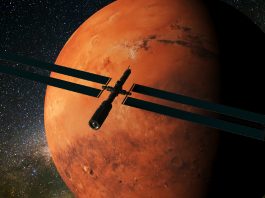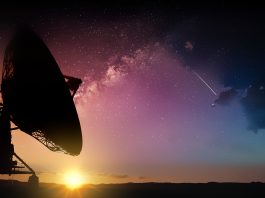A team of US-based engineers has been awarded considerable funding from NASA to enhance data transfer capabilities in space exploration.
The team, comprised of researchers at West Virginia University, has been funded with a $750,000 award from NASA’s Established Programme to Stimulate Competitive Research, which will be invested in advancing data transfer methods during space exploration. The endeavour is aiming to improve the sending and receiving of information between a spacecraft and the ground station.
Limitations of data transfer in space
Currently, when a spacecraft leaves the orbit of the Earth and voyages into the abyss of deep space, the process of data transfer becomes increasingly difficult due to the near unquantifiable distance between the two. For example, when the Mars rover transmits pictures of the Martian landscape back to scientists on Earth, it is, in fact, transferring data, data that relies on a form of light called radio waves to traverse the 241 million miles between Mars and our planet.
Piyush Mehta, an Assistant Professor in the Department of Mechanical and Aerospace Engineering at the West Virginia University, said: “It’s a long way for the information to travel and the signal gets weaker because of several reasons, the most important being the distance of the spacecraft away from the Earth.
“To filter out the noise from the incoming signal, the data rate needs to be reduced and collected by a large antenna-like NASA’s Deep Space Network. For most missions, the scientific value and return are limited by the amount of data that can be collected and sent back.”
This vital data is more than simply images from space; it can be any measurements procured by a satellite as it permeates a planet’s atmosphere or even sounds sent via signals back to Earth.
Mehta said: “These spacecrafts also have a limited budget for storage of data, much like a hard drive. For example, you don’t want to be collecting too much data too fast for it to be able to transfer down to Earth. Alternatively, you want enough memory on board to store all of that data before you can transfer it down.”
Devising alternative transfer techniques
The researchers have hypothesised that a solution for data transfer is to compress the collected data to reduce its size, similar to the method that reduces large files on a desktop computer before it is sent via email, with the recipient decompressing the file to open it.
“Data compression has been used on NASA missions since the early space age,” Mehta said. “However, with continuously improving sensor technology, the demands placed on deep space communication systems are continuously increasing. The challenge now is improving the algorithms to enhance the performance of this compression without losing the most useful and important information.”
Evolving these algorithms will be an extremely arduous task that is not as simple as compressing a file for an email. To achieve this feat, Mehata and his collaborator Nasser Nasrabadi, a Professor in the Lane Department of Computer Science and Electrical Engineering at West Virginia University, are partnering with NASA Goddard and NASA IV&V. This will enable them to design, test, validate, and deploy the enhanced AI-based algorithms on simulated spacecraft systems using datasets from previous space missions. Essentially, the algorithm is similar to a black box; data enters one side, and the compressed data leaves the other, with the algorithm situated between the two.
“Obviously, a lot goes behind the algorithm, but the idea is to optimise the compression of the data such that maximum information content is retained while minimising the size of the data that needs to travel or be transferred,” Mehta commented.
The project has the potential to be of vital use in a variety of settings, such as sustaining Earth and solar observations, exploring the solar system and deep space, and enhancing the accuracy of weather forecasting.
“I’m mostly stoked because if we are successful in achieving the goals of the project, we could be looking at the majority of NASA space missions carrying our technology, and that makes me extremely excited,” Mehta concluded.









